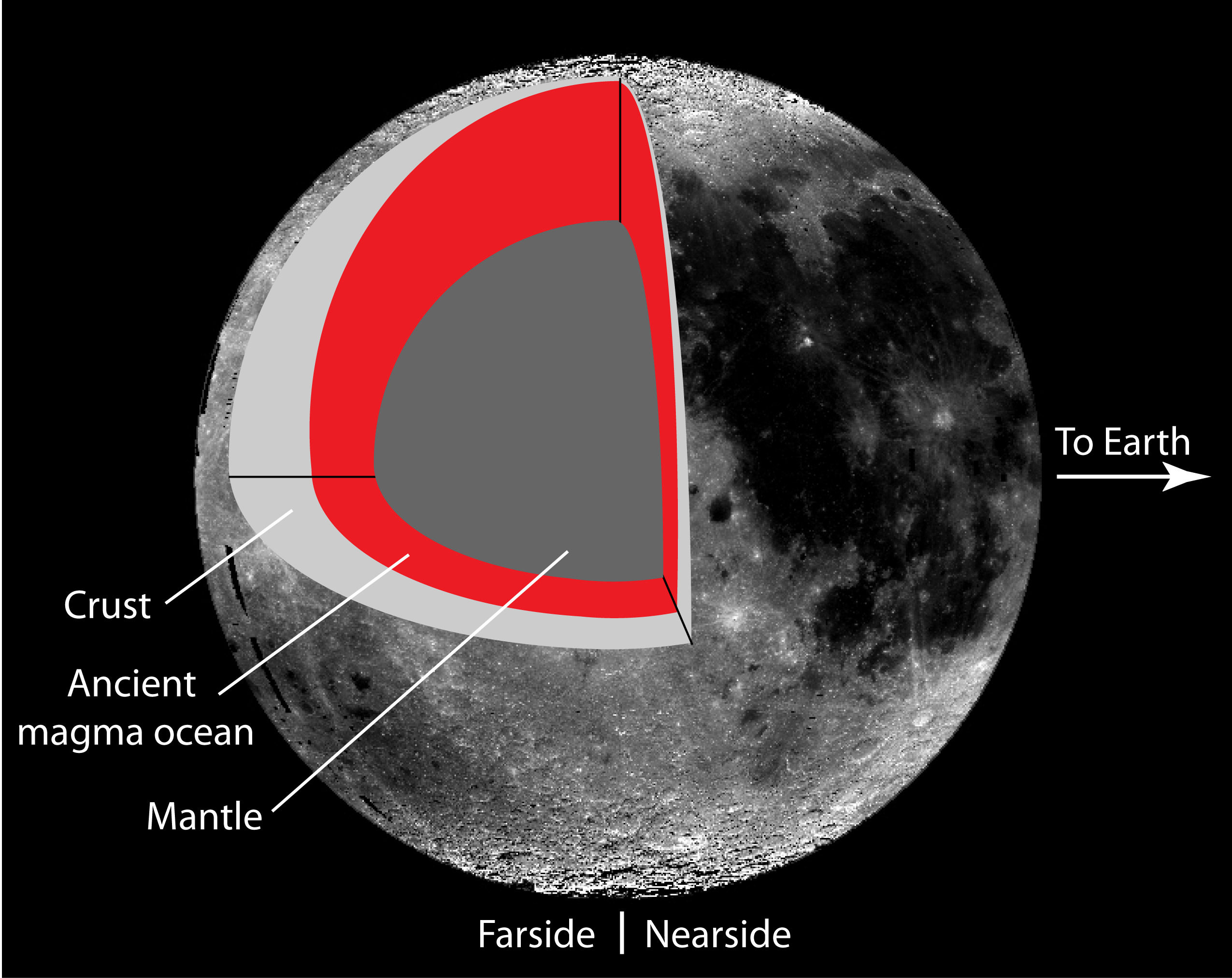[/caption]
A self-conscious Moon might ask, “Does my far side look big?” To which lunar scientists would have to reply in the affirmative. They have long known there is a bulge on the Moon’s far side, a thick region of the lunar crust which underlies the farside highlands. But why that bulge is there has been a mystery, and the fact that the far side always faces away from Earth hasn’t helped. Now, a group of international scientists have found that perhaps the tidal processes of Jupiter’s icy moon, Europa, can provide a clue.
“Europa is a completely different satellite from our moon, but it gave us the idea to look at the process of tidal flexing of the crust over a liquid ocean,” said Ian Garrick-Bethell, the lead author of a new paper that offers an explanation for the lop-sided Moon.
Since the Apollo 15 laser altimeter experiment, scientists have known that a region of the lunar far side highlands is the highest place on the Moon. Additionally, the far side has only highlands and no maria.
Like Europa’s icy crust that sits over an ocean of liquid water, the Moon’s crust once floated on a sub-surface ocean of liquid rock. So, could the same gravitational forces from Jupiter that influence Europa also apply to the Earth’s influence on the early Moon?
Garrick-Bethell, from UC Santa Cruz, and his team found that the shape of the Moon’s bulge can be calculated by looking at the variations in tidal heating as the ancient lunar crust was being torn away from the underlying ocean of liquid magma.

With Europa in mind, the scientists looked at global topography and gravity data sets of the Moon, trying to determine the possibility of how about 4.4 billion years ago, the gravitational pull of the Earth could have caused tidal flexing and heating of the lunar crust. At the polar regions, where the flexing and heating was greatest, the crust became thinner, while the thickest crust would have formed in the regions in line with the Earth.
To back up their theory, they found that a simple mathematical function — a 2-degree spherical harmonics function — can explain the phenomenon. “What’s interesting is that the form of the mathematical function implies that tides had something to do with the formation of that terrain,” said Garrick-Bethell.

However, this doesn’t explain why the bulge is now found only on the farside of the Moon. “You would expect to see a bulge on both sides, because tides have a symmetrical effect,” Garrick-Bethell said. “It may be that volcanic activity or other geological processes over the past 4.4 billion years have changed the expression of the bulge on the nearside.”
Garrick-Bethell said his team hopes to continue to do more modeling and calculations to fully describe the far side’s features.
“It’s still not completely clear yet, but we’re starting to chip away at the problem,”he said.
The paper will be published in the November 12, 2010 issue of Science.
(Paper not yet available — we’ll post the link when it goes online).


Might that far side bulge originally have been the early impact site of a large metallic proto-planetary sized asteroid? Thereby unbalancing the core? The impact not completely fusing masses with the existing lunar core instead co-orbiting a common center of mass during cooling and subsequent solidification?
Guess we’ll just have to go there and drill some core samples? Industry to boost the economy? Lunar robotic drilling operations finding deposits of ? Paid for by stake holders in the endeavor who as part of their participation enjoy tax benefits for the duration of the exploratory phases and eventually a percentage of the gross of any profit realized? Solar powered lasers anyone?
I know, I know… first the chicken then the egg. The first chicken came from?
Probably this prodigal first chicken comes from some infinite profit margin. That’s why we of the ‘chicken faith’ worship profit margins almost as much as the Golden Egg! So think about this. Chickens flying in an air filled sealed lava tube on the Moon will probably fly quite well, thank you very much, in the 1/6 gravity! Or so we of the faith hope and pray… aman
Like an Eagle spreading its wings for the first time!
Final score? Prodigal Chickens 1 Humans 2
I will have to wait until I can get behind the paywall on that paper (and the link would be appreciated), but there is a very predictive paper from Takahashi et al, Geophys Res Ltrs vol 36, 2009 (“Thermal core-mantle coupling in an early lunar dynamo: …”) which pretty definitely, I thought, established that the bulge & magnetic anomalies of the Moon is the frozen remnant of the first (expected) mantle plume from a differentiated Moon.
That ties together gravitic and magnetic anomalies with the current understanding of our own mantle transition to the current tectonic regime. Oh, and they definitely used spherical harmonics in their model and noted a low one, a Bessel function of the second kind Y11, for the crustal thickness; which seems to derive from their ref Schubert et al 2001.
[The reason I know about this rarefied reference is because it points to an early Earth dynamo as well, which affects abiogenesis. So our lecturer in my astrobiology course put this in front of us. The Moon is very educational on the Earth-Moon system, apparently.]
link.